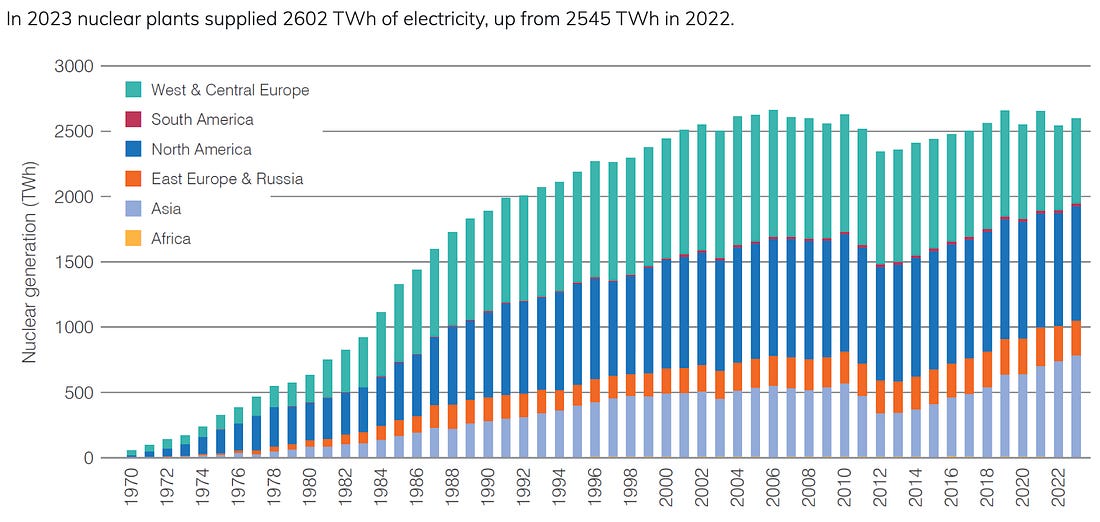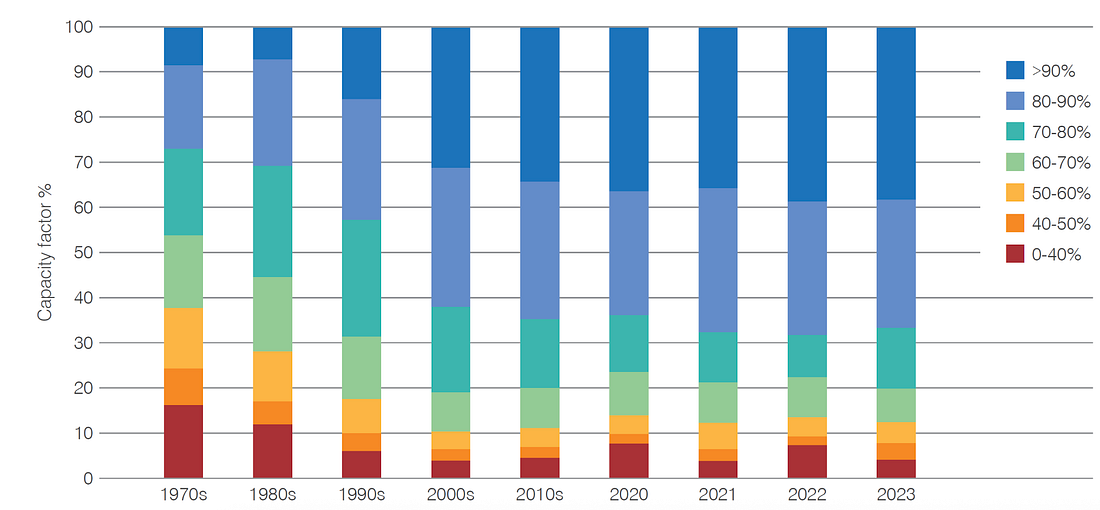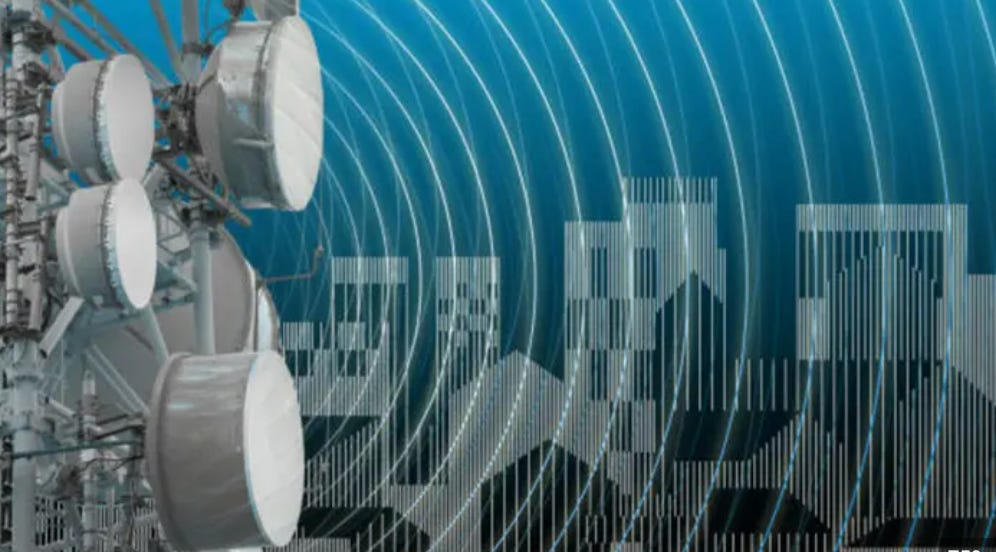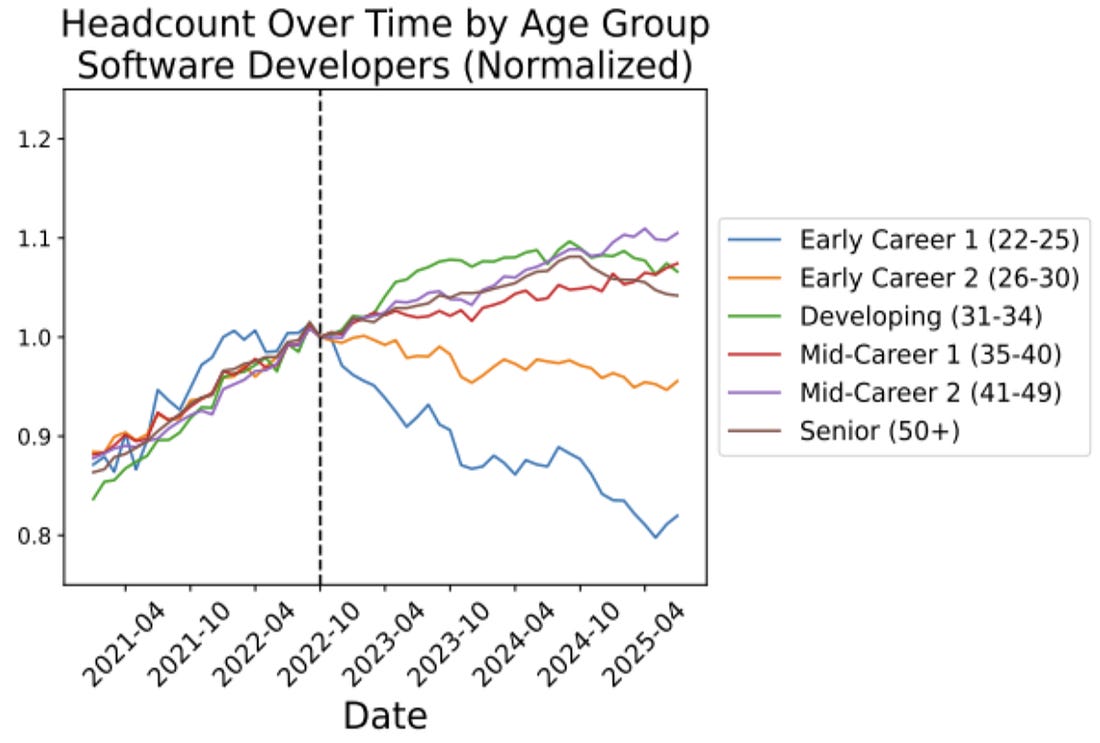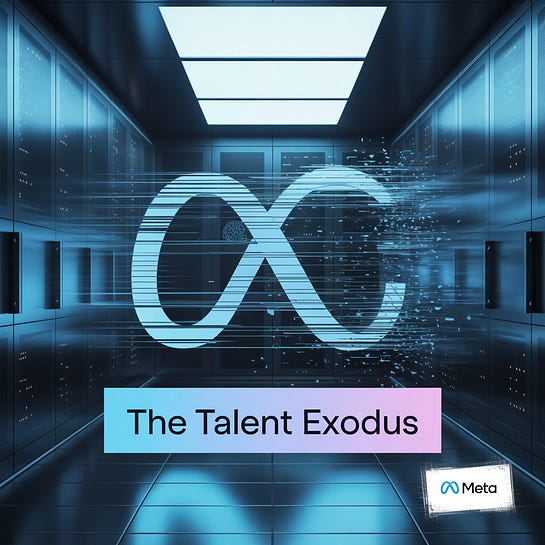China’s Pre-Positioned for a Digital Strike on AmericaPlus: China’s Pre-Positioned for a Digital Strike on AmericaHappy Friday, and if you’re on a long weekend, enjoy it. In this issue, we break down how fission and fusion work and why they matter, then examine China’s cyber capabilities and its accelerating edge across key tech fronts, including brain–computer interfaces. Dive in, share your take, and stay curious.
📰 AI News and Trends
🌐 Other Tech news
China’s Pre-Positioned for a Digital Strike on AmericaChina is winning the cyberwar by infiltrating U.S. infrastructure with malware designed for sabotage, not just espionage. The “Salt Typhoon” operation exposed major U.S. telecoms and revealed China’s ability to pre-position cyberweapons across power grids, water systems, and transportation networks. Unlike China’s centralized, real-time cyberdefense, the U.S. relies on fragmented, privately owned systems with limited oversight. To catch up, the U.S. must shift from defense to deterrence, building AI-powered “digital twins” of critical infrastructure to identify vulnerabilities and investing in credible offensive cyber-capabilities. Without urgent action, China’s lead will grow, and the U.S. risks falling permanently behind in the digital battlefield. 🧰 AI Tool
Fission vs. FusionPowering the AI AgeAs we continue to hear, AI is booming, and so is its energy appetite. Training a single large AI model can consume as much electricity as over 100 U.S. homes in a year. Projections show global data center power demand, largely driven by AI, could increase by 165% by 2030. This massive energy need highlights the urgent demand for clean and reliable power sources. Can Nuclear Energy come to the rescue? And what is Nuclear Power? Nuclear energy comes in two forms:
Why Fission is Common and What are its Challenges Fission is widely used because it's a proven, reliable source of baseload power, operating continuously regardless of weather. Its fuel (uranium) is energy-dense and relatively inexpensive. However, fission faces challenges: public concerns about safety (Chernobyl, Fukushima), the risk of nuclear weapons proliferation, and the need for long-term disposal of radioactive waste. Regulations are strict, governed by treaties like the Nuclear Non-Proliferation Treaty (NPT) and national bodies like the NRC. The Promise of Fusion and Its Hurdles Fusion is considered safer and cleaner. It produces no long-lived radioactive waste and carries no risk of runaway reactions. Its fuel sources (deuterium from seawater, tritium from lithium) are virtually limitless. The main hurdle is the extreme conditions required, temperatures over 100 million degrees Celsius, making it incredibly difficult to contain and control. Commercial fusion is still decades away. Recognizing its safety advantages, regulatory bodies are developing more streamlined frameworks for fusion, separate from fission. Environmental FootprintBoth fission and fusion offer significant environmental advantages over fossil fuels, primarily their near-zero operational greenhouse gas emissions. However, they differ in waste: Fission: Produces high-level, long-lived radioactive waste that requires secure, long-term storage. Fusion: Produces significantly less radioactive waste, and it's typically short-lived, decaying to safe levels within decades. Powering the AI FutureAI's energy demands necessitate a dual approach:
In essence, fission provides the crucial clean energy bridge for today's AI needs, while fusion holds the key to a truly sustainable and energy-abundant future for AI and beyond. Guess who is Betting on Brain-Computer InterfacesChina’s brain-computer interface (BCI) industry is growing fast, projected to hit US$777 million by 2027, with 20% annual growth. Backed by strong government support and over 50% of global corporate BCI patents, China is positioning BCIs as a key pillar in its tech strategy. Non-invasive devices dominate today, but invasive BCIs, used in neurosurgery and paralysis rehab, are gaining traction. Regional plans in Beijing, Shanghai, and Sichuan aim for breakthroughs by 2027 and global leadership by 2030. BCIs serve both commercial and strategic goals, from improving healthcare to powering China’s shift to high-tech industries. Foreign investors have entry points, but face regulatory and market access challenges.
🧰 AI Guides
🚀 Showcase Your Innovation in the Premier Tech and AI Newsletter (link) As a vanguard in the realm of technology and artificial intelligence, we pride ourselves in delivering cutting-edge insights, AI tools, and in-depth coverage of emerging technologies to over 55,000+ tech CEOs, managers, programmers, entrepreneurs, and enthusiasts. Our readers represent the brightest minds from industry giants such as Tesla, OpenAI, Samsung, IBM, NVIDIA, and countless others. Explore sponsorship possibilities and elevate your brand's presence in the world of tech and AI. Learn more about partnering with us. You’re a free subscriber to Yaro’s Newsletter. For the full experience, become a paying subscriber. Disclaimer: We do not give financial advice. Everything we share is the result of our research and our opinions. Please do your own research and make conscious decisions. |
Friday, August 29, 2025
China’s Pre-Positioned for a Digital Strike on America
Wednesday, August 27, 2025
👷♂️AI squeezes young workers
AI is making it harder to land a job, especially for entry-level positions. Sorry, college grads. Meanwhile, Starlink is pushing for more spectrum to challenge major carriers, and it might just succeed. Over at Meta, top AI talent is already fleeing, some straight back to OpenAI. What’s driving these shifts? Let’s dig in. Stay curious.
Yaro on AI and Tech Trends | Your Top AI Newsletter is a reader-supported publication. To receive new posts and support my work, consider becoming a free or paid subscriber. 📰 AI News and Trends
🌐 Other Tech news
Starlink and T-Mobile to Disrupt the U.S. wireless marketStarlink and T-Mobile are eyeing spectrum licenses owned by struggling EchoStar, parent of DISH Network. EchoStar holds one of the largest underused blocks of U.S. airwaves, long hoarded by chairman Charlie Ergen, but faces pressure from FCC Commissioner Brendan Carr to sell. Just as if Musk did not have enough leverage and power in the tech space, one of his companies can now position itself to be a main contender in the wireless market, obtaining more data from users, having more power to acquire government contacts, and more insight data to police users for government and company benefits. Here is how it breaks down:
China's Response to This?Meanwhile, on the other side of the world, China is moving fast on airwaves and satellites. Its Guowang megaconstellation, run by the state-backed and secretive China SatNet (founded 2021), is shaping up as more than just a Starlink rival. The launch cadence has recently matched Starlink’s pace, signaling rapid scale-up. Built by multiple manufacturers and launched on diverse rockets, Guowang’s satellites operate at higher altitudes, meaning fewer units are needed for global coverage. Analysts warn the network could give the People’s Liberation Army (PLA) a tactical edge in Western Pacific conflicts by boosting secure communications and surveillance. 🧰 AI ToolProductivity
AI squeezes young workersAI Is Hurting Young Workers’ Job Prospects
🧰 AI Guides
Top AI Hires Flee Meta After Weeks on the JobMeta’s new Superintelligence Lab is already showing signs of trouble. Just two months after Mark Zuckerberg launched the initiative with sky-high recruiting offers, at least three researchers have resigned, two returning to OpenAI after less than a month, and one, Rishabh Agarwal, leaving for undisclosed reasons. Meta is also losing longtime generative AI product director Chaya Nayak, who is joining OpenAI. The shake-ups raise questions about the lab’s stability despite Zuckerberg dangling nine-figure pay packages to lure talent. Meta has also been plagued by repeated AI team reorganizations and is now striking deals with startups like Midjourney to focus on AI-generated video for Facebook and Instagram. Meanwhile, OpenAI, despite criticizing Meta’s hiring spree, appears to be regaining key staff. 🚀 Showcase Your Innovation in the Premier Tech and AI Newsletter (link) As a vanguard in the realm of technology and artificial intelligence, we pride ourselves in delivering cutting-edge insights, AI tools, and in-depth coverage of emerging technologies to over 55,000+ tech CEOs, managers, programmers, entrepreneurs, and enthusiasts. Our readers represent the brightest minds from industry giants such as Tesla, OpenAI, Samsung, IBM, NVIDIA, and countless others. Explore sponsorship possibilities and elevate your brand's presence in the world of tech and AI. Learn more about partnering with us. You’re a free subscriber to Yaro’s Newsletter. For the full experience, become a paying subscriber. Disclaimer: We do not give financial advice. Everything we share is the result of our research and our opinions. Please do your own research and make conscious decisions. © 2025 Yaro Celis |


